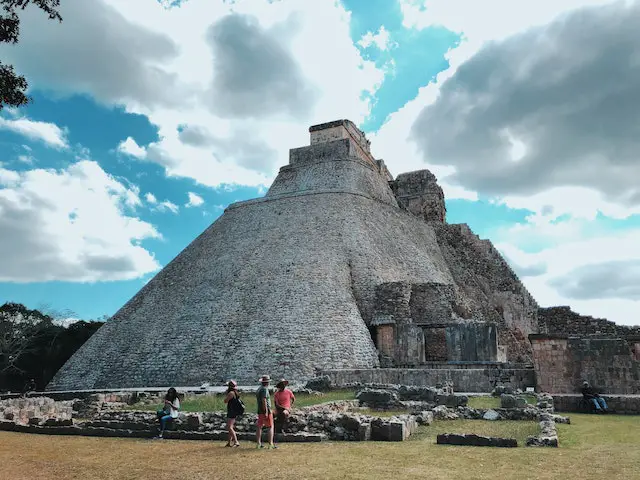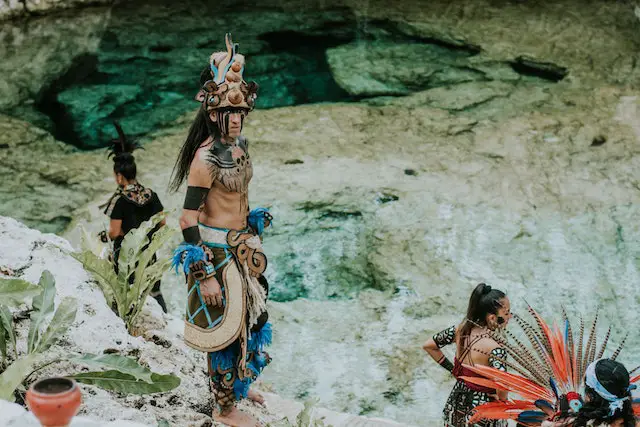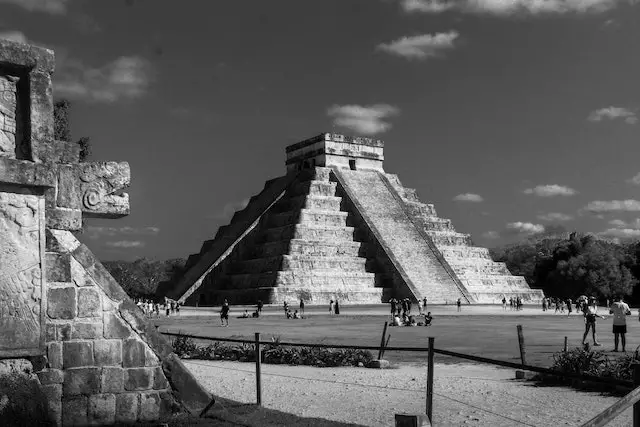
Mayan mythology is a fascinating and complex set of beliefs, rituals, and traditions passed down orally for thousands of years.
It is an integral part of Mayan identity and culture, connecting indigenous people to the spiritual realm.
This ancient mythology includes the gods and goddesses, heroes and heroines, stories, and symbols.
It is believed that the gods and goddesses of Mayan mythology created the universe, humanity and all life on earth, making them powerful figures in their culture.
In addition to the creation stories, there are tales of love, death, and courage, among many other topics.
Although much of this information has been lost over time due to colonization and other events, the stories and beliefs remain an important part of Mayan culture.
This article will explore the various gods and goddesses, stories and symbols of Mayan mythology.
- Read also: 10 Norse Mythology Facts That You Should Know
- Read also: 10 Greek Mythology Facts That Most People Don’t Know
Mayan Gods and Goddesses

Mayan mythology includes a wide variety of gods and goddesses, each with its role in the creation and order of the universe. Here are some of the major players in the Mayan pantheon:
Huracan
Huracan is the god of storms, night, thunder and lightning.
He is usually depicted as a large bird with a red face surrounded by smoke.
Huracan was believed to be responsible for creating the world through his fierce winds and powerful storms.
As the god of hurricanes and tempests, Mayans feared and respected him.
According to the Popol Vuh, Huracan was the first of the gods and he created the earth, sky and sea.
He also raised mountains and filled valleys with water.
It is said that when Huracan roared, it caused thunder and lightning across the land.
Furthermore, his powerful winds cleared away forests to make way for new ones as well as helped to fertilize the soil and create new life.
Itzamna
Itzamna is the god of knowledge and the creator of written language.
He was believed to have descended from the heavens to teach humans how to read and write.
He is often depicted as an old man with a long beard, wearing a headdress made of feathers.
Itzamna was seen as a wise and powerful deity responsible for bringing healing and knowledge to the Mayans.
He was said to have invented astronomy, astrology, mathematics, and other forms of science.
Furthermore, Itzamna was believed to be the patron god of medicine, men, and healers, giving them the power to cure illnesses and heal injuries.
As the god of knowledge, he was also responsible for teaching humans to live in harmony with their environment and all living things.
Kukulkan
Kukulkan is the feathered serpent god of creation, fertility, and war.
He is usually depicted as a large snake with feathers along his body, wings on his back, and a crown on his head.
According to Mayan mythology, Kukulkan descended from the heavens to create the universe.
He is believed to have created the four directions, mountains and valleys, rivers and lakes, animals and plants, and humans and gods.
Furthermore, Kukulkan was seen as a powerful protector of his people and a bringer of justice.
Depending on his mood, he was believed to be capable of both great destruction and great healing.
Kukulkan was also associated with death and rebirth as the god of war and fertility.
He was seen as a powerful figure who could call upon the sun, moon, stars, and all other elements to bring balance and harmony to the world.
Tlaloc
Tlaloc is the god of rain, thunder, lightning, fertility, and water. He is usually depicted as a man with a blue face, surrounded by black clouds and rainbows.
Tlaloc was believed to be responsible for bringing rain, which would nourish the crops and provide sustenance for his people.
Furthermore, he was seen as a powerful figure who could cause drought and fertility depending on his mood.
Tlaloc was also associated with death and rebirth as the god of fertility. He was believed to have the power to bring life or take it away as he pleased.
Additionally, Tlaloc is considered one of the most powerful gods in Mayan mythology due to his ability to influence both natural disasters and beneficial weather conditions.
Mayan Hero Myths

The Mayans also had many heroic myths and stories about brave warriors, cunning deities, and wise kings.
These tales served as a source of entertainment for the Mayan people and to illustrate important aspects of their culture.
Some of the most popular Mayan Hero Myths include:
Popol Vuh
Popol Vuh is an ancient Mayan text which tells the tale of creation, gods, and heroes.
It is believed to have been written sometime in the 16th century CE by a scribe named Chilam Balam.
The text describes the journey of two siblings, Hunahpu and Xbalanqué, as they attempt to prove themselves worthy of becoming gods and saving the world from destruction.
The Hero Twins
The Hero Twins are two mythical characters from the Mayan creation stories.
The twins, Hunahpu and Xbalanqué, were said to be the sons of a creator god who descended to Earth to bring life and civilization to the world.
They faced many obstacles on their journey, testing their strength, courage, and perseverance.
Eventually, the twins were successful in their quest and ushered in a new era of peace and prosperity for the Mayan people.
Hunahpu
Hunahpu is one of the two Hero Twins in Mayan mythology.
He was said to be brave and determined yet kind-hearted.
Hunahpu fought against evil forces and restored balance in the world.
He is often portrayed as a strong, courageous figure who stands up for what is right and acts with integrity.
His story exemplifies moral courage and strength in the face of adversity.
Xbalanqué
Xbalanqué is the other Hero Twin in Mayan mythology.
He is known for his wisdom and clever thinking. Xbalanqué could outwit the gods, who had put obstacles in his path, and he ultimately helped bring peace and stability to the world.
His story exemplifies using intelligence and wit rather than brute force to achieve one’s goals.
Quetzalcoatl
Quetzalcoatl is a god of the wind and sky in Aztec and Mayan mythology.
He is usually depicted as a feathered serpent and is considered one of Mesoamerica’s most powerful gods.
Quetzalcoatl was seen as a protector of his people, providing them with knowledge, culture, and the arts. He was also associated with death and rebirth as the god of fertility.
Quetzalcoatl is considered one of the most important gods in Mayan mythology due to his ability to bring great destruction and healing.
The End of the Mayan World Myth

The Mayans believed that the world would end in a great cataclysm.
This end-of-the-world myth was known as “the time of no return.”
According to Mayan mythology, this event will be caused by an earthquake or a great flood and it will destroy everything on Earth.
However, after this event, a new and better world will be created and the Mayan people will live in harmony with nature.
The stories of the Mayans are an integral part of their culture, providing a sense of identity and continuity.
These myths have been passed down through generations and continue to shape the way that modern-day Mayans view life and the world around them.
Through these tales, they can gain insight into their past and envision the future.
- Read also: 10 Fascinating Egyptian Mythology Facts
- Read also: 10 Sumerian Mythology Facts
Conclusion
The Mayan culture has had a lasting impact on the world today.
Their myths and legends have helped to shape their beliefs, values, and ways of life.
From heroic twins fighting against evil forces to great gods bringing destruction and salvation, these stories provide us with important insights into this ancient civilization’s worldview.
Mayans believed that their gods had the power to shape their destiny, and these stories continue to inspire and guide modern-day Mayans.
Whether it’s Popol Vuh or the Hero Twins, the myths of the Mayan culture give us a window into their world and provide an important contribution to our global heritage.



